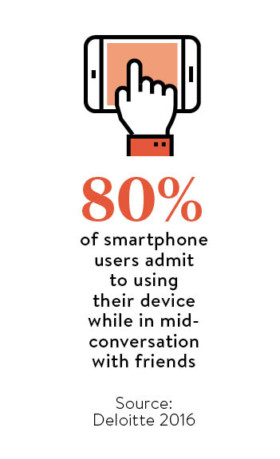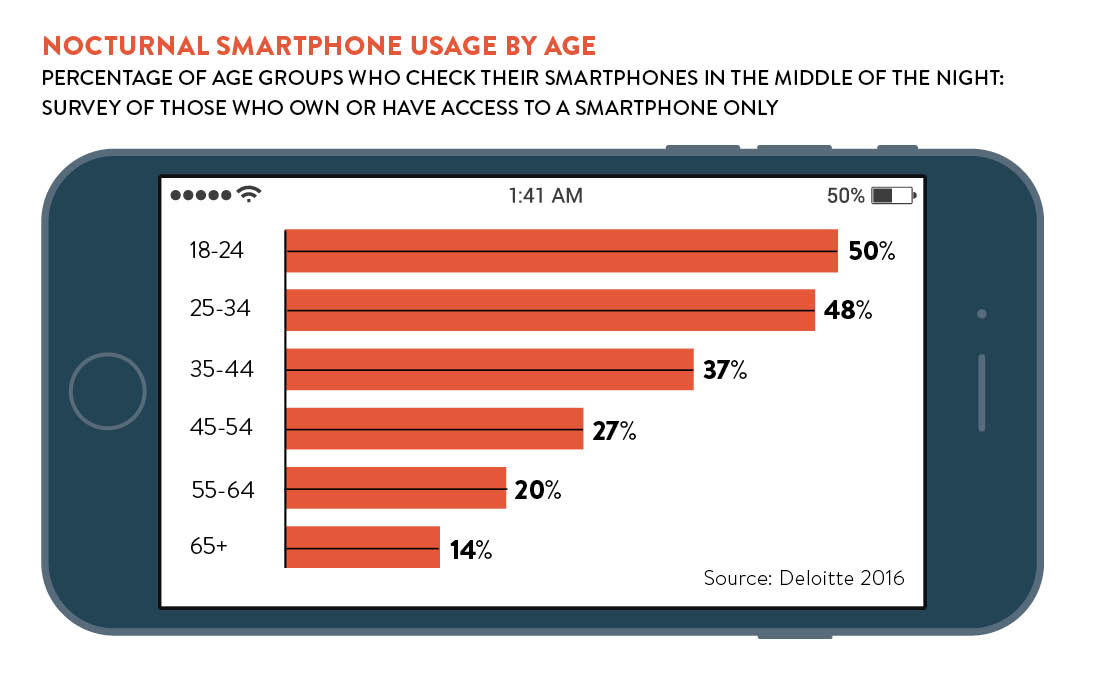“Like air and drinking water, being digital will be noticed only by its absence, not its presence.”
So wrote Nicholas Negroponte, chairman of MIT Media Lab, in a prescient WIRED magazine article in 1998. No, that’s not a typo. 1998 – 19 years ago – when most of us were still marvelling at the melodies of our dial-up 28.8kb modems. For those reading this article who don’t know what that means, ask your parents.
Mr Negroponte’s beautifully simple statement sums up why organisations increasingly need to evolve their strategy and business model to be successful in today’s constantly changing world. Digital technology has evolved from being a thing or a feature, to being part of the very fabric of the world in which we live and work. Yet for many organisations, it’s still treated as “a thing”.
Despite years of research reports, training workshops, conference presentations, consultancy assignments and media articles, most organisations continue to view their customers’ online and offline behaviour as separate existences.
This is evident in how businesses approach marketing compared with digital marketing, how customer service in store compared with online versus via telephone feels disconnected, and how widely businesses attempt to separate digital and non-digital costs and revenues through legacy organisational structures and profit and loss statements.
 On and offline
On and offline
In reality, today’s citizen doesn’t distinguish between a digital and non-digital interaction with a brand or business. Gone are the days of “going online”. Remember “logging in” to AOL to activate an internet connection?
Now consumers are in a state of permanent connectivity, even when hundreds of feet below ground on the tube or thousands of feet above ground in the air. The expectation is a seamless, frictionless experience with businesses irrespective of the channel or combination of channels. Anything short of this can cause frustration, and lead to lost customers and revenues.
What’s more, businesses are no longer dealing just with “digital immigrants” – those whose behaviour has adapted to new digital technologies – we’re now in the presence of the first true “digital natives” – Gen Z, Centennials or the iGeneration – who have grown up knowing nothing of our analogue yester-existence, and for whom social media, the iPhone and broadband connectivity have just always been there. Now this generation are in the process of entering the labour market and unleashing their spending power across sectors.
Consumer behaviour
To begin to understand how behaviours are changing and the implications for businesses, it’s helpful to look through the eyes of a consumer, and understand how digital permeates and transforms key moments in a typical day.
Take smartphones, for example. According to regulator Ofcom, at the start of 2016, 71 per cent of UK adults owned at least one, and the UK is home to some 40 million 4G mobile subscriptions, putting always-on connectivity in the palms and pockets of the vast majority of the British public. And we’re not just using these devices for calls and text messages anymore, the latter seeing a year-on-year reduction in volumes sent between 2014 and 2015.
Taking the time to map the end-to-end customer journey is an essential first step in understanding how to turn consumers’ digital dependence from a risk to an opportunity
Management consultancy Deloitte’s Mobile Consumer 2016 research reveals just how pervasive these devices have become. Take the start of the day, for instance. One in three of us check our phones within five minutes of waking up, with unfettered access to e-mail, messaging, social media, digital news and the full wonders of the worldwide web before we’ve even got out of bed. What’s more, slightly more (34 per cent) admit to checking out phones in the middle of the night and the number is even higher for younger generations as more than 50 per cent of 18 to 24 year olds confess to overnight usage.
Our devices aren’t just interrupting our sleep, either. In the same study, 80 per cent of us admit to being active on our smartphones while in mid-conversation with friends, 68 per cent of us do so while having dinner with family and 81 per cent are still tapping away on our screens while watching TV in the evening.
It’s hard to deny consumers’ reliance on technology and this can manifest itself in some extreme ways. In a 2016 research report, Expedia found that travellers consider their smartphone to be the single most indispensable item they carry with them when they travel, ahead of their toothbrush, deodorant and driving licence.
As we’ve become seemingly inseparable from our iPhones and the like, we’ve also become reliant on them to make other aspects of our life simpler or more effective.

Everyday impact
Take shopping. The rise of our connected society has led to a new trend known as “showrooming” or researching products and checking prices in store, and buying online later. In its Digital Index 2015 Holiday Shopping Predictions report, technology firm Adobe found that 67 per cent of UK consumers admitted to showrooming during the holiday shopping season. While this trend is still infrequent, it is growing, with Adobe reporting that just one in five UK consumers frequently check prices via mobile while in a physical store compared with 15 per cent the year before.
Convergence of online and offline shopping experiences is even more pronounced in a 2015 study from mobile loyalty firm SessionM, which reported that a vast 90 per cent of US smartphone users are active on their phones in stores while shopping. The top activities reported by the firm included making price comparisons (54 per cent), searching for product information (48 per cent) and checking online consumer reviews (42 per cent).
Although these studies only touch on a fraction of the impact which digital technology has on our lives, they are undoubtedly representative of dramatic changes in consumer behaviour and underscore the importance of such insights for businesses.
What this means for business
In reality, though, many organisations are yet fully to decipher what these changes mean for their business model, their customer experience, and their ability to reach and engage their target audiences. To avoid falling behind a more digitally sophisticated customer, leaders and managers should start by asking themselves two important questions.
Firstly, do we fully understand the totality of our customers’ journeys with our organisation? For many organisations, this remains opaque, and the customer experience delivered fragmented as a result of legacy structures and internal silos. Taking the time to map the end-to-end customer journey is an essential first step in understanding how to turn consumers’ digital dependence from a risk to an opportunity.
Secondly, do we know how digital plays a role in our customer experience today and where it has the potential to play a greater role in the future? How and where does technology “interrupt” transmission of our messages to our target audience and how could it be used to improve it? Where are the key online interactions we have with our customers and how do these connect with offline interactions? Are these interactions as seamless as they could be for the customer, and as efficient and effective as they have the potential to be for us?
Having a digital-first lens on your customer journey will ensure you don’t overlook the influence of technology on your ability to reach and serve customers, and on your operational delivery.
While there’s no silver bullet in this constantly changing digital world, there’s no escaping the value of walking in your customers’ shoes, and looking at the world through their eyes, rather than internal preconceptions and legacy wisdom.
 On and offline
On and offline
Consumer behaviour

